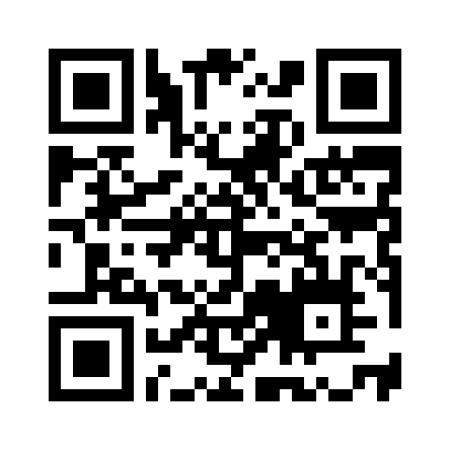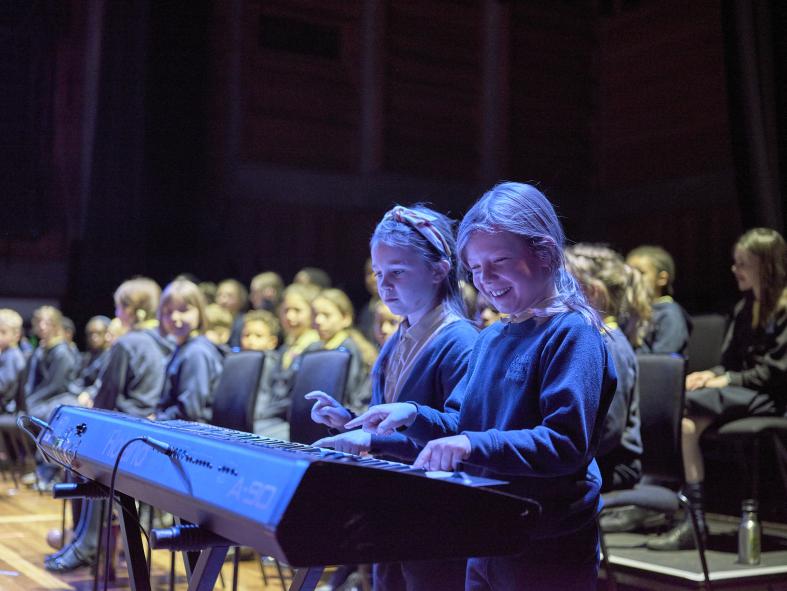






Saturday 8 October 2022, 1.30pm

Southbank Centre's Queen Elizabeth Hall
Iannis Xenakis O mega
Iannis Xenakis Palimpsest
Iannis Xenakis Échange
Iannis Xenakis Thalleïn
Mark van de Wiel clarinet
Philip Howard piano
Oliver Lowe percussion

Geoffrey Paterson conductor
London Sinfonietta
This concert is part of the Southbank Centre's Xenakis Centenary celebrations. This concert will be followed by free performances of Xenakis' solo music in the Queen Elizabeth Hall Foyer.

The London Sinfonietta is grateful to Arts Council England for its generous support of the ensemble, as well as the many other individuals, trusts and businesses who enable us to realise our ambitions. This concert is produced by the London Sinfonietta and supported by the Southbank Centre. The work of the London Sinfonietta is supported by the John Ellerman Foundation.

Did you enjoy this concert? Let us know by filling in this short survey:
Welcome to this, our first concert in the 2022/23 season.
The London Sinfonietta’s relationship with Iannis Xenakis is one of many the ensemble has had with the great living composers of their day. There is something of a homecoming to performing his hugely distinctive music again, and particularly meaningful that we do that as part of this anniversary celebration
We are grateful to Geoffrey Paterson for leading us from the podium and for helping to shape this project with us. And to our soloists – Philip Howard who joins us to perform the extraordinary piano part in Palimpsest and London Sinfonietta musicians Mark van de Wiel and Oliver Lowe who have important solo parts to play
This event forms part of a larger day of activity with the Southbank Centre, and we remain hugely grateful to them for our ongoing relationship and their financial support of this project We are also grateful for the investment of the Arts Council of England, and to the trusts, foundations & individuals who make our work possible.
I hope you will join us for more events in our coming season. The year is a demonstration of what the London Sinfonietta stands for its history of innovation It was the dedication to commissioning and new work that formed a history that we can now celebrate, and it’s important that we both create new music today for our future, as well as celebrate our past.
Andrew Burke Chief Executive and Artistic DirectorWe hope you enjoy your visit. We have a Duty Manager available at all times If you need any information or help, please ask a member of staff.
Eating, drinking and shopping? Take in the views over food and drinks at the Riverside Terrace Cafe, Level 2, Royal Festival Hall. Visit our shops for products inspired by our great cultural experiences, iconic buildings and central London location.
Explore across the site with Beany Green, Côte Brasserie, Foyles, Giraffe, Honest Burger, Las Iguanas, Le Pain Quotidien, Ping Pong, Pret, Strada, Skylon, Spiritland, wagamama and Wahaca.
If you would like to get in touch with us following your visit, please write to: Visitor Contact Team, Southbank Centre, Belvedere Road, London SE1 8XX, or email hello@southbankcentre.co.uk
We look forward to seeing you again soon A few points to note for your comfort and enjoyment:
Photography is not allowed in the auditorium. Latecomers will only be admitted to the auditorium if there is a suitable break in the performance.
Recording is not permitted in the auditorium without the prior consent of the Southbank Centre.
The Southbank Centre reserves the right to confiscate video or sound equipment and hold it in safekeeping until the performance has ended.
Mobiles and watches should be switched off before the performance begins.
The London Sinfonietta always strives to extend its reach to more people with the inspiring sound of new music
This season we are showcasing modern masterpieces, and thought-provoking worldpremieres, plus a continued passion to inspire the public and young people with new music. The new work includes music from different genres from contemporary classical to jazz and experimental - and collaborations with different art forms including video, animation, theatre and literature.
We will also be releasing new monthly content on our London Sinfonietta Digital Channel including a regular series of performance films, videos about new music and podcasts.
The London Sinfonietta was the first ensemble in the UK to launch a dedicated music education programme. This pioneering spirit has continued and flourished ever since, expanding to include regular performances and workshops with members of the public



One such project includes Sound Out, which facilitates groups of young people to enter the fascinating world of new music and learn more about how to compose, putting it into practice by interacting with London Sinfonietta musicians who seek to encourage and inspire the next generation of creative artists
During the lockdowns of 2020 and 2021, we developed the programme to work online with a t f id C iti Ch ll
"It helped me realise anyone can be a composer even a pupil!" Pupil response to Sound Out 2019
The London Sinfonietta supports emerging talent with its year round programmes for composers, conductors and performers, giving early career artists the opportunity to develop new skills and contacts as they establish h l i h professional arena.



Our composer developm Future, seeks to create n expand the chamber mus music creators from all c backgrounds who are pa form and would like the o experience to writing for ensemble.
The London Sinfonietta side by side coaching an opportunities to young m a concert showcase. Find out more and appl londonsinfonietta.org.u
"It’s been very sti I’ve got so much o It’s a privilege to p London Sinfoniett
rience the best of the London Sinfonietta med directly to your device from the London nietta Channel.
season we’re continuing our regular ses of new performance films, and also ng deeper in our Introduction to emporary Instruments series. Look out for p ming releases of music by Alicia Jane Turner, Alex Paxton, Laura Jurd and Harrison Birtwistle. For podcast lovers, the second series of Couch to Concert with Paul Morley and Cerys Matthews explores Toru Takemitsu's nature-inspired music. Find out more at londonsinfonietta.org.uk/channel




Iannis Xenakis was one of the leaders of modernism in music, hugely influential particularly in the later 1950s and 1960s, when he was experimenting with compositional techniques that soon entered the basic vocabulary of the twentieth-century avant garde.

Xenakis was born, not in Greece, but in Braïla, Romania, of Greek parents, on 29 May 1922 His initial training, in Athens, was as a civil engineer In 1947, after three years spent fighting in the Greek resistance against the Nazi occupation, during which time he was very badly injured (losing an eye), he escaped a death sentence and fled to France, where he settled and subsequently became an important element of cultural life
Xenakis was first active as an architect, collaborating with Le Corbusier on projects including the Philips Pavilion, designed by Xenakis at the 1958 Brussels World Fair. It was in the 1950s, too, that Xenakis began to publish his compositions In 1952 he had composition classes with Olivier Messaien, who suggested that Xenakis apply his scientific training to music.
The resulting style, based on procedures derived from mathematics, architectural principles and game theory, catapulted Xenakis to the front ranks of the avant garde although there was never any suggestion that he was a member of a clique or group: he was always his own man. He never, for example, embraced total serialism, and also avoided more traditional devices of harmony and counterpoint; instead, he developed other ways of organising the dense masses of sound that are characteristic of his first compositions. These stochastic, or random, procedures were based on mathematical principles and were later entrusted to computers for their realisation. But for all the formal control in their composition, Xenakis’ scores retain an elemental energy, a life-force that gives the music an impact of
visceral effectiveness: works like Bohor for electronics (1962), Eonta for piano and brass quintet (1963 64), Persephassa for six percussionists, placed around the audience (1969), and the ballet Kraanerg, for 23 instruments and tape (1969) all exhibit a primitive power that belies the complexity of their origins. The Sydney Morning Herald said of Kraanerg, for example, that it "remains staggeringly powerful and clamorous, an essay in constantly renewed energy that shows not the least sign of faltering" Married with this primordial power is the composer's fascination with ritualism, most often that of ancient Greece, finding fullest theatrical form in his setting of the Oresteia (1966).
Reprinted by kind permission of Boosey & Hawkes
All through his composing life Xenakis kept coming up with pieces for a dozen or so mixed players, compact shots of music. One of these was there at the end, in 1997, written not just for Sinfonietta scale resources but for the Sinfonietta itself, to play at the 1997 festival in Huddersfield. After this Xenakis decided he could write no more, and he appropriately called the piece Omega, after the last letter of the Greek alphabet.
If it was a final close to a busy and illustrious career, it functions very well to open a concert A percussionist starts drumming on a bongo, as if sending a signal to the others to join in. This they do, in chords played by one or more of the families involved: brass, woodwind and strings. The chords are loud. They are also frequently (though not always) harsh We seem to be, as so often with Xenakis, observers at some ancient ceremony. The percussionist is meanwhile moving on to other drums, and developing a dialogue with the rest of the musicians. No sooner has the image settled, than it disappears. Palimpsest (1979) has many of the same features. There is again a solo percussionist, a
drummer, and a sense of signals being sent out to the ensemble, which is a little smaller, comprising four wind players and five strings. This, however, is a much longer work, playing for around twelve minutes. And it has another soloist, on piano.
It is through the piano, this time, that the music gets going, and it does so in waves sweeping irregularly up and down the keyboard. Often the pianist’s fingers pick out scales sometimes ones that give a flavour of Asian music but more often homeless and wandering. Often, too, the scales are going at more or less different speeds. This time the other instruments come in to support this, with their own rapid scales growing out of the piano’s. Xenakis called this ‘arborescence’, how musical lines will branch out from one another, parallelling the form of a tree. Of course, the title provides another image, in how one text is written over by another in a palimpsest.
The percussionist is sometimes part of this, but only quite rarely are the two soloists active at the same time And other things are introduced in addition to, or instead of, branching waves (to mix metaphors a little): solid pulses, glissandos.
Towards the end the ensemble finds a new voice. And then this, too, is dissipated in branchings.
A little longer, Échange (1989) is quite a different sort of animal Xenakis wrote it for the Dutch musician Harry Sparnaay, who was an energetic proponent of the bass clarinet and a great persuader of composers hundreds of them, including Luciano Berio, Brian Ferneyhough, Gérard Grisey, Jonathan Harvey and Helmut Lachenmann. Energy and persuasiveness are duly written into the piece, or else they come from the nature of the instrument, from its flexible ability to sing and growl, even simultaneously, and from how it is held against much of the performer’s body.
The piece begins with the bass clarinet entering low and slowly rising, each of its notes doubled and held by a companion in this deep bass
territory – horn, trombone, cello and bassoon – to make a thickening throb. These instruments, together with double bass and tuba, are the bass clarinet’s neighbours. Others violins, viola, high woodwind, trumpet strike from higher up

As the bass clarinet goes on, with and against the ensemble, it discovers a little motif that gets repeated and seems to be the seed for much of the melodic unfolding that follows. Now and then Xenakis appears to be channelling his inner Messiaen Around the halfway mark he more startlingly channels his inner Beethoven, with an unashamed chord of E flat major.
Before this, about a third of the way into the piece, the soloist has a cadenza, which comes to a culmination or crisis point at a low C blown hard to shatter into multiphonics The higher tones taken up by the ensemble, it is as if the cadenza has given everyone a boost. A second, shorter solo passage is capped by the shock major chord, and from here the bass clarinet moves to singing higher. Insistent pulses force it into a silent corner, and though it bounces back, the ending is with violins and viola in a register out of its reach.
Thalleïn (1984) was the Sinfonietta’s first commission from Xenakis and is a piece they have repeated many times. It is scored for the full ensemble of soloists on all the regular instruments, and takes as its title a Greek verb meaning ‘bloom’ or ‘flourish’.
That is pretty much how it goes for upwards of fifteen minutes, its continuous growth proceeding through sequences for different groupings that fold into one another, or else criss cross in dialogue, and through others featuring just two or three musicians or giving prominence to a soloist. Everyone here gets a chance, as the piece goes on sprouting new growths out of what has gone before. You can call this arborescence, or you can call it a modern music jam session.
Paul GriffithsMark van de Wiel is established as one of Britain's leading, and most versatile, clarinettists. As principal clarinettist of the London Sinfonietta and the Philharmonia Orchestra, and as a well known soloist and chamber musician, he performs at major venues throughout the world.
Mark was born in Northampton, and educated at Merton College Oxford and the Royal College of Music. He was immediately appointed principal clarinettist with the Welsh National Opera and subsequently with Glyndebourne Touring Opera Since 2000 he has been principal clarinettist with the Philharmonia Orchestra, and was appointed principal with the London Sinfonietta in 2002.
As a soloist he has performed with the Philharmonia, London Sinfonietta, London Chamber Orchestra (in La Scala, Milan), Thames Chamber Orchestra, Mozart Festival Orchestra, Welsh National Opera Orchestra, English Classical Players, the Arhus Orchestra, Belgrade Strings, and the Birmingham Contemporary Music Group. He is particularly well known for his performances of contemporary music, and has given many premieres.
Mark is a professor at the Royal Academy of Music, and has recorded chamber music for EMI, ASV, NMC and Finlandia records, and as a soloist for Olympia and NMC. He broadcasts frequently.

The pianist and composer Philip Howard (born 1976, UK) won First Prize in the International Gaudeamus Interpreters’ Competition 2003 held in Rotterdam. He is the first British winner of the competition in 35 years.
Philip was taught by Alexander Abercrombie, Graeme Humphrey and Michael Finnissy. At the age of 15 he won the BBC Young Musician of the Year Young Composer Award, in the inaugural year of the award and as the youngest entrant. He later went on to study composition and piano at the Royal Academy of Music in London, from where he graduated in 1998.
Philip’s solo piano album ‘Decoding Skin’ features works by Xenakis, Feldman and Finnissy, among others. Although he intends to devote the near future particularly to performing works by those three composers, Philip gives strong support to the music of his young contemporaries and also plays the music of much earlier generations. Philip sees contemporary music not as something separate from history but rather as the most recent episode in a continuous process.
Oliver graduated from the Royal College of Music in 2011 with first class honours Since then he has had a busy and varied career He has performed and been broadcast on TV and radio across Europe, the USA, Asia and the UK. Oliver has worked closely with many composers playing and recording new commissions, including Steve Reich, Mica Levi, George Benjamin, Helmut Lachenmann, Oliver Knussen, Okkyung Lee, Thurston Moore (Sonic Youth) and others. He has also been involved in numerous recordings, including performing on Hot Chip’s album In Our Heads.
As an orchestral musician, Oliver works with the London Sinfonietta, BBC Symphony Orchestra, Philharmonia Orchestra, Opera North, Aurora Orchestra and Gürzenich Orchestra Cologne, among others.

Oliver teaches regularly and has taught and mentored musicians from the Royal College of Music, Guildhall School of Music and Drama and Yong Siew Toh Conservatory of Music (Singapore). He has also worked on educational projects with many organisations, including the BBC, the London Sinfonietta, Multi Story Orchestra, and the London Olympic Games
British conductor Geoffrey Paterson is admired for his impressive grasp of detail, responsiveness to musicians, and his ability to shape and make music from the most complex scores with natural authority.
Highlights of Paterson’s 2021/22 season include his Frankfurt Opera debut with Britten A Midsummer Night’s Dream in a new production by Brigitte Fassbaender, and his Japanese debut conducting Nagoya Philharmonic in a programme of Boulanger, Ravel, a new work by Tomoki Sakata and Rachmaninoff: Symphony No.3. He conducts the Danish National Symphony Orchestra in their Pulsar contemporary music festival, and the world premiere of a dramatic song cycle by Cheryl Frances Hoad with the City of London Sinfonia. Paterson also conducts return engagements with the BBC Symphony Orchestra, BBC Scottish Symphony Orchestra, Norwegian Radio Orchestra, Hamburg Symphony Orchestra, BBC National Orchestra of Wales, Red Note Ensemble and the London Sinfonietta, with whom he has a regular ongoing collaboration.
Paterson studied at Cambridge University where he also took composition lessons with Alexander Goehr followed by studies at the Royal Scottish Academy of Music and Drama

The London Sinfonietta is one of the world’s leading contemporary music ensembles. Formed in 1968, our commitment to making new music has seen us commission over 450 works and premiere hundreds more. Artistic Associate at Kings Place and Resident at the Southbank Centre, with a busy touring schedule across the UK and abroad, the London Sinfonietta’s Principal Players are some of the finest musicians in the world. Our ethos is to experiment constantly with the art
the UK supporting and encouraging their musical creativity, while our annual London Sinfonietta Academy is an unparalleled opportunity for young performers and conductors to train for their future in the profession with our Principal Players.
The London Sinfonietta has also broken new ground by launching its own new digital Channel, featuring video programmes and podcasts about new music We created Steve Reich’s Clapping

Helen Keen flute
Melinda Maxwell oboe/cor anglais
Mark van de Wiel*
clarinet
Timothy Lines clarinet/bass clarinet
Luke Whitehead bassoon
Timothy Ellis french horn
Holly Clark trumpet
Andy Cole trombone
Oren Marshall tuba
David Alberman violin
Elizabeth Wexler violin
Fiona Winning viola
Tim Gill* cello
Enno Senft* double bass
Philip Howard piano
Oliver Lowe percussion
* London Sinfonietta Principal Player

Whatever your interest in new music
as a composer, performer, teacher, student, amateur musician, or as an audience member interested in contemporary arts

welcome you to our community.
up to our mailing list to receive:
with
tell people’s stories. We make new music.
By making a donation to the London Sinfonietta, you can help create world class new music projects both onstage and online for audiences to enjoy all around the world. You can help us reach thousands of young people each year through our composition programmes in schools, and you can enable us to provide world class training to the next generation of performers, composers and conductors.
Fundraising accounts for 32% of our annual income. Without the generous support of individuals, sponsors and charitable trusts, we simply would not be able to achieve the scale of work that we are able to deliver with your help inspiring a wide audience around the UK and internationally with the best music of today.
do supporting all areas of the London Sinfonietta’s new music making, and enabling us to reach an ever-wider audience with the music of today. And you'll gain a closer insight into our work, with access to open rehearsals and exclusive behind the scenes updates

London Sinfonietta Pioneer membership starts from just £50. Visit our website to find out more and join us in pioneering new music today.
londonsinfonietta.org.uk/support-us

London Sinfonietta would like to thank the following organisations and individuals for their support:
Art Mentor Foundation Lucerne, Boltini Trust, Ernst von Siemens Music Foundation, Hinrichsen Foundation, Jerwood Arts, John Ellerman Foundation, Leverhulme Trust, PRS for Music Foundation, Royal Philharmonic Society, RVW Trust, Stanley Thomas Johnson Foundation, Steven R. Gerber Trust
We have also previously been supported by the following trusts and foundations:
Aspinwall Educational Trust, Barbara Whatmore Charitable Trust, Boris Karloff Charitable Foundation, Britten Pears Foundation (now Britten Pears Arts), Cockayne Grants for the Arts, The D'Oyly Carte Charitable Trust, Fenton Arts Trust, The Fidelio Charitable Trust, Garfield Weston Foundation, Golsoncott Foundation, The Harold Hyam Wingate Foundation, Helen Rachael Mackaness Charitable Trust, Hodge Foundation, The Leche Trust, The Lord and Lady Lurgan Trust, Lucille Graham Trust, The Marchus Trust, Michael Tippett Musical Foundation, Michael Watson Charitable Trust, The Nugee Foundation, Rainbow Dickinson Trust, Summerfield Charitable Trust, The Thistle Trust, UK Antarctic Heritage Trust
David Atherton OBE
John Bird
Alfred Brendel KBE
Gillian Moore MBE
Nicholas Snowman OBE
Annabel Graham Paul
Penny Jonas
Anthony Mackintosh
Robert McFarland
Michael & Patricia McLaren Turner
Stephen & Dawn Oliver
Paul & Sybella Zisman
The London Sinfonietta Council
Andrew Burke
Susan Costello
Dennis Davis
Susan Grollet
John Hodgson
Charlotte Morgan
Andy Spiceley
Paul & Sybella Zisman
Sharon Ament
Anton Cox
Nicholas Hodgson
Philip Meaden
Simon Osborne
Ian Baker
Frances Bryant Andrew Burke
Jeremy & Yvonne Clarke
Dennis Davis
Richard & Carole Fries
John Goodier
Patrick Hall
Chris Heathcote Simon Heilbron Andrew Hunt Frank & Linda Jeffs Belinda Matthews
Stephen Morris Andrew Nash Julie Nicholls
Ruth Rattenbury
Malcolm Reddihough
Iain Stewart Susan Sturrock
Fenella Warden Jane Williams
Plus those generous Artistic and Creative Pioneers who prefer to remain anonymous, as well as our loyal group of Pioneers
PRINCIPAL PLAYERS
Gareth Hulse oboe (supported by John Hodgson)
Mark van de Wiel clarinet
Simon Haram saxophone
Byron Fulcher trombone
Jonathan Morton first violin (supported by Paul and Sybella Zisman)
Paul Silverthorne viola
Tim Gill cello (supported by Sir Stephen Oliver QC)
Enno Senft double bass (supported by Anthony Mackintosh) Helen Tunstall harp (supported by
Charlotte Morgan)
David Hockings percussion (supported by Andy Spiceley)
LONDON SINFONIETTA COUNCIL
Fiona Thompson chair
Sud Basu
Andrew Burke
Tim Gill (principal player)
Annabel Graham Paul
Kathryn Knight
Charlotte Morgan
Jonathan Morton (principal player)
Paul Silverthorne (principal player)
James Thomas
Ben Weston
LONDON SINFONIETTA STAFF
Andrew Burke Chief Executive & Artistic Director
Frances Bryant General Manager
Elizabeth Davies Head of Finance
Volker Schirp Financial Assistant
Natalie Marchant Head of Concerts & Production
Madeleine Ridout Event Producer
Alice Reeves Professional Placement Trainee
Eleanor Killner Development & Events Assistant Adam Flynn Digital Productions Manager
Phoebe Walsh Marketing Manager
Emily Heywood Marketing Officer
Lily Caunt Head of Participation & Learning
Rhuti Carr Head of Participation & Learning (maternity leave)
Aoife Allen Participation & Learning Producer
Penny Jonas
Anthony Mackintosh
Belinda Matthews
Philip Meaden
Sir Stephen Oliver QC
Hal Hutchison Concert Manager
Lesley Wynne Orchestra Personnel Manager
Tony Simpson Lighting Designer
WildKat PR
The London SInfonietta is grateful to its auditors and accountants MGR Weston
Kay LLP

New
by British jazz stars,
by
Purcell
A hypnotic and mesmerising

Janulyte
music
Streich, Tyshawn Sorey, Jack Sheen
Salvatore
Fri
Dec, Queen Elizabeth
A




of one of
the late great
Mar, Queen Elizabeth
A cool and elegant
Reich
New York
Apr, Royal Festival
A showcase of dizzying
of musical cultures
25 May, Queen Elizabeth





